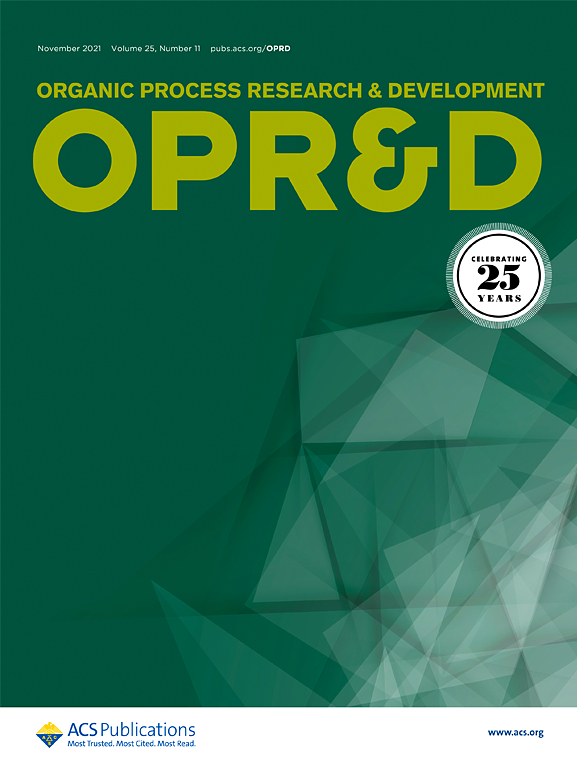Enabling the First Scale-Up of the Selective HER2 Inhibitor BI-4142
IF 3.1
3区 化学
Q2 CHEMISTRY, APPLIED
引用次数: 0
Abstract
The enabling synthesis of the first route to HER2 inhibitor BI-4142 (1) to deliver a drug substance in kilogram quantity is reported. The synthetic route involves (1) a fit-for-purpose synthesis of pyrimido[5,4-d]pyrimidine 2; (2) a high yielding, scalable synthesis of aniline 3; (3) a safer sodium tungstate-catalyzed sulfide oxidation; (4) SNAr reactions to form C–N bonds; and (5) amidation via Schotten–Baumann conditions. With the speed of delivery prioritized, a purification protocol using silica gel filtration and crystallizations was developed in time to control the quality of API. The overall yield of the delivery route was improved from 22% to 46% over a prior route starting from 2.

选择性HER2抑制剂BI-4142的首次规模化应用
据报道,能够合成HER2抑制剂BI-4142(1)的第一种途径,以递送公斤数量的药物。合成路线包括(1)符合目的的嘧啶[5,4-d]嘧啶2的合成;(2)高效、规模化的苯胺3合成;(3)更安全的钨酸钠催化硫化物氧化;(4) SNAr反应形成C-N键;(5) Schotten-Baumann条件修正。以输送速度为优先,及时制定了硅胶过滤结晶纯化方案,控制原料药的质量。与之前从2点开始的配送路线相比,配送路线的总收益率从22%提高到46%。
本文章由计算机程序翻译,如有差异,请以英文原文为准。
求助全文
约1分钟内获得全文
求助全文
来源期刊
CiteScore
6.90
自引率
14.70%
发文量
251
审稿时长
2 months
期刊介绍:
The journal Organic Process Research & Development serves as a communication tool between industrial chemists and chemists working in universities and research institutes. As such, it reports original work from the broad field of industrial process chemistry but also presents academic results that are relevant, or potentially relevant, to industrial applications. Process chemistry is the science that enables the safe, environmentally benign and ultimately economical manufacturing of organic compounds that are required in larger amounts to help address the needs of society. Consequently, the Journal encompasses every aspect of organic chemistry, including all aspects of catalysis, synthetic methodology development and synthetic strategy exploration, but also includes aspects from analytical and solid-state chemistry and chemical engineering, such as work-up tools,process safety, or flow-chemistry. The goal of development and optimization of chemical reactions and processes is their transfer to a larger scale; original work describing such studies and the actual implementation on scale is highly relevant to the journal. However, studies on new developments from either industry, research institutes or academia that have not yet been demonstrated on scale, but where an industrial utility can be expected and where the study has addressed important prerequisites for a scale-up and has given confidence into the reliability and practicality of the chemistry, also serve the mission of OPR&D as a communication tool between the different contributors to the field.

 求助内容:
求助内容: 应助结果提醒方式:
应助结果提醒方式:


